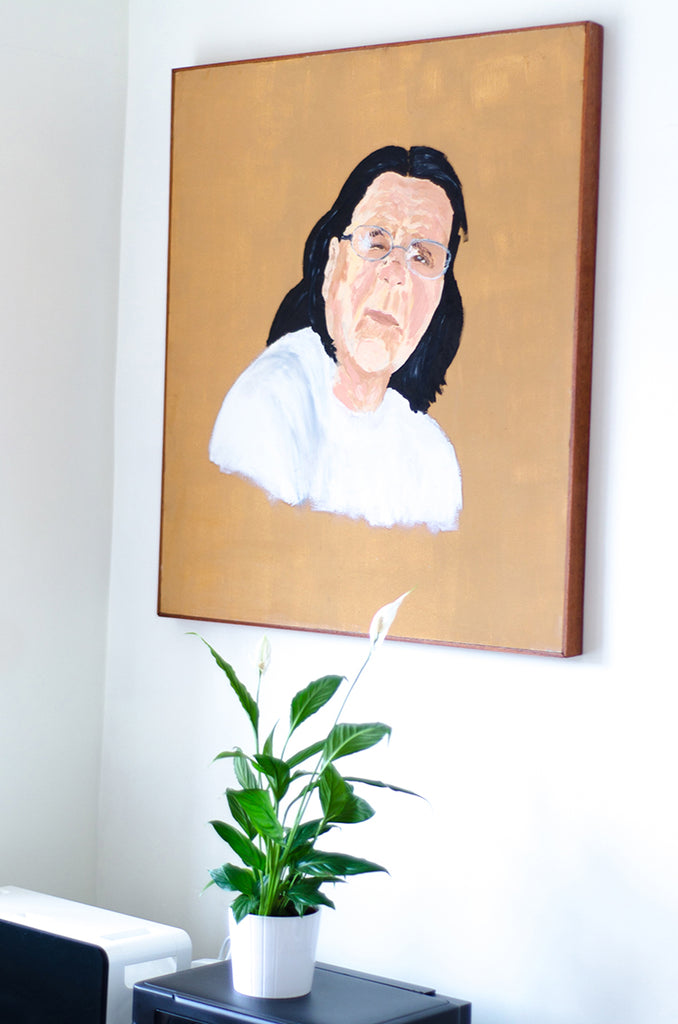blog
How to care for your artwork
So you finally took the plunge.
After months courting that gorgeous painting, after stalking it for what felt like ages, after going back and forth between buying and not buying it, you finally did it. You are now the proud owner of that amazing piece of work. That thing that doesn't have any apparent practical purpose, but makes you feel oh-so good. That one thing that strikes a nerve, that makes you feel something, that touches your soul. Now you got it. It's yours. It feels right. And it makes your entire house feels like home.
There's just one little problem: now what?
You love this thing and want to take good care of it. After all, you did spend all this time and money to buy it. You want to treat it well.
The big question is: How?
Well, here are a few tips that will make your life a whole lot easier.

How to care for your artwork:
- Artwork on cotton canvas or linen doesn’t need to be framed with glass to protect it and if it’s already stretched, you may opt to have it framed or not.
- Artwork on paper should be framed with glass to protect it: Frame your artwork with UV-treated Plexiglas, not regular glass. Plexiglas is not as fragile and a is lot lighter. Sunlight is the greatest enemy of art and UV-Plexiglas is the easiest way to protect works on paper (including photographs) from harmful UV rays.
- Use matting paper thick enough to keep a distance between the artwork and the glass (specially for works made with oil pastels, which never really dry completely). The canvas itself must never directly touch glass. Canvas likes to breath, so it is important not to cover the surface with glass.

- Use acid free materials to frame and store artwork: The acids found in non-conservation grade matting paper and/or tape used for matting/framing can cause yellowing and discoloration and will ruin your artwork over time
- Never leave artwork in a tube: it can bend the art and over time it may cause cracking and yellowing because of the acidic tube.
- Avoid direct sunlight: UV rays are harmful and will cause cumulative and irreversible damage.
- Avoid abrupt changes in temperature and humidity: This will cause mold and can cause the stretcher bars on the painting to warp. Hanging your painting in places with a lot of humidity, such as bathrooms or kitchens is really not a good idea.
- Heat can damage your artwork: it can make the artwork dry or become brittle, especially paintings on canvas. It’s also important to leave some space behind the artwork for ventilation, and to have a barrier paper on the backside of the artwork for protection.
- The oils in your hands can leave damaging marks to an unframed work. Be mindful of that and always handle artwork with clean hands (or use lint free gloves). Also, do not hang your artwork is in an area where it can become greasy.
- Oil paintings done on cardboard do not need glass or matting paper to protect them, but it’s usually better to have it properly varnished to protect against damage (check with the artist or gallery) and it’s better to frame it in order to protect the edges of the painting

- Never use rubbing alcohol or cleaners with ammonia to clean your frames or artwork. Water will remove your frame finish, stain your prints and lift paint off canvas. Chemicals will do even more damage.
- Ammonia FREE cleaner is recommended for all picture framing glass cleaning.
- If your artwork is covered with Plexiglass or Acrylic, use a cleaner specifically designed for those materials, or use a soft damp cloth and spot clean gently to avoid scratches. Never use rubbing alcohol or any cleaner containing ammonia because they can fog the Plexiglass.
- Never use feather dusters, pole mounted dusters or vacuum cleaner attachments as these can scratch or mar the surface of your artwork. When dusting and cleaning your painting, it is best to dust with a SABLE BRUSH using compressed air to loosen the dust from the surface. Most paintings have been sealed with varnish to protect the artwork, but cleaning the surface should always be done with great care. Professional cleaning is always recommended.
- Smoke will damage your artwork. Be it from a fireplace, or from cigarettes (hanging artwork on top of fire places is not advisable). Cotton canvas will absorb smoke and become discolored over time.
I hope you find these tips on how to care for your artwork useful. After all, you want to take good care of your investment.
Feel free to share these tips and let me know if you have any other suggestions in the comments below.
 |
How to care for your artwork: 15 tips to help you take good care of your investment. |
Sources:
Bhandari, Heather Darcy; Melber, Jonathan. ART/WORK. New York: Free Press, 2009.
Bomford, David. Conservation of Paintings: National Gallery Pocket Guide. London: Ashdown Press Limited, 1997.
Mayer, Ralph. The Artist's Handbook of Materials and Techniques. Fifth Edition, Revised. New York: Penguin Books, 1991.
Nicolaus, Knut. The Restoration of Paintings. New York: Konemann, 1999.






